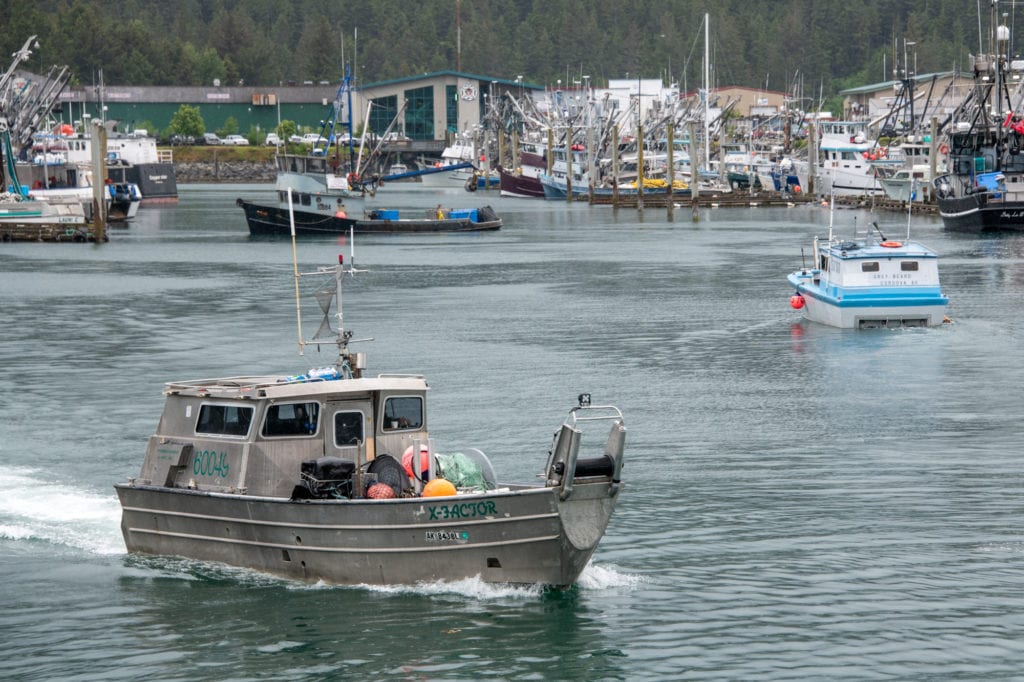
By Tommy Sheridan, Mike Wells, Tina Fairbanks, Katie Harms, Dean Day, David Landis and Scott Wagner
For The Cordova Times
The sun is shining, plants are budding, and salmon are starting to return. Yet for all the outward signs of a normal spring season in Alaska, it is anything but. COVID-19 has impacted all our family members and friends. It’s fractured and isolated our communities and sent the economy into a tailspin toward recession. The scope of what remains unknown is overwhelming.
What we do know is that we’ll get through this together. From food shortages in the 1940s to the ‘64 Earthquake to the recession of ‘85-87, Alaskans are no stranger to adversity. This time won’t be any different. We’ll do as we’ve done before: we’ll help each other through the worst of it, then we’ll rebuild.
Thankfully, one issue Alaskans don’t have to worry about right now is food security. Despite concerns that it would buckle and fail under the stress of a pandemic, the global food system has shown remarkable resilience. Farms continue to produce. Ships, trucks, and planes continue to transport. Markets and grocery stores continue to stock shelves, with only minor disruptions.
As the leaders of Alaska’s non-profit salmon hatchery associations, we are proud to do our part to keep the system functioning properly. From the first days of the pandemic, we understood the importance of supporting Alaska’s world-class salmon fisheries, not only for Alaskans whose livelihoods are tied to salmon but also for the millions of people who depend on the nutritional value of wild Alaska salmon to supplement their diets.
On average more than 800 million pounds of seafood is harvested annually from the Gulf of Alaska and the Bering Sea, according to the Alaska Department of Fish and Game. That’s roughly equivalent to hundreds of billions of calories and billions of grams of high-quality protein. And as research has shown, the calories in Alaska’s wild salmon pack a nutritional punch, including Omega-3s and a range of vitamins that support healthy bones, joints, and immune systems.
Promoting the health of Alaska’s salmon fisheries is our first and foremost goal. In fact, our origin partly lies in crisis. After the 1964 Earthquake shifted bedrock and destroyed spawning streams in Prince William Sound, and following fishery closures over several of the following seasons, community members in Southcentral Alaska came together to create what is now the Prince William Sound Aquaculture Corporation. Then, as now, the purpose of Alaska’s non-profit hatcheries was to enhance fisheries while protecting Alaska’s wild salmon stocks.
Today, the non-profit hatcheries serve as constant and reliable partners alongside other key stakeholders in one of Alaska’s cornerstone industries. By providing enhanced stock when wild returns are low, we help ease the boom-bust cycle that typically plague resource industries. This, in turn, supports sport, commercial, personal use, and subsistence fishermen alike who depend on Alaska’s salmon stocks for their livelihoods. Every year over 300,000 hatchery-born salmon are harvested by sport, personal use, and subsistence fishermen across the state from Kodiak to Ketchikan.
The decades spent sustainably managing wild runs and growing our salmon hatchery program has paid off for Alaska. From 2013 to 2018, Alaska salmon hatcheries accounted for 4,700 jobs annually, contributed to the incomes of over 16,000 individuals, and produced $218 million in labor income and $600 million in total economic output. We’re proud of the ways in which our hatcheries have impacted the economy to date, but hopeful for how this impact can bolster Alaska in the tough months ahead.
As Alaska marches into its unpredictable future in the face of COVID-19, we intend to continue operating as an essential service for all Alaskans and all user groups. We will continue to enhance Alaska’s salmon fisheries, support Alaskans and their economic livelihoods, and provide nearly one billion nutritious meals for the world annually. This is our mission and we’re working hard today and tomorrow to fulfill it. As Alaska rebuilds, we remain grateful for what we can count on: returning salmon, full freezers, and each other.
Tommy Sheridan is CEO of the Prince William Sound Aquaculture Corporation; Mike Wells is executive director of Valdez Fisheries Development Association; Tina Fairbanks is executive director of Kodiak Regional Aquaculture Association; Katie Harms is executive director of Douglas Island Pink and Chum; Dean Day is executive director of Cook Inlet Aquaculture Association; David Landis is general manager of Southern Southeast Regional Aquaculture Association; Scott Wagner is general manager of Northern Southeast Regional Aquaculture Association. To learn more about Alaska’s private non-profit salmon hatcheries, visit salmonhatcheriesforak.org.





